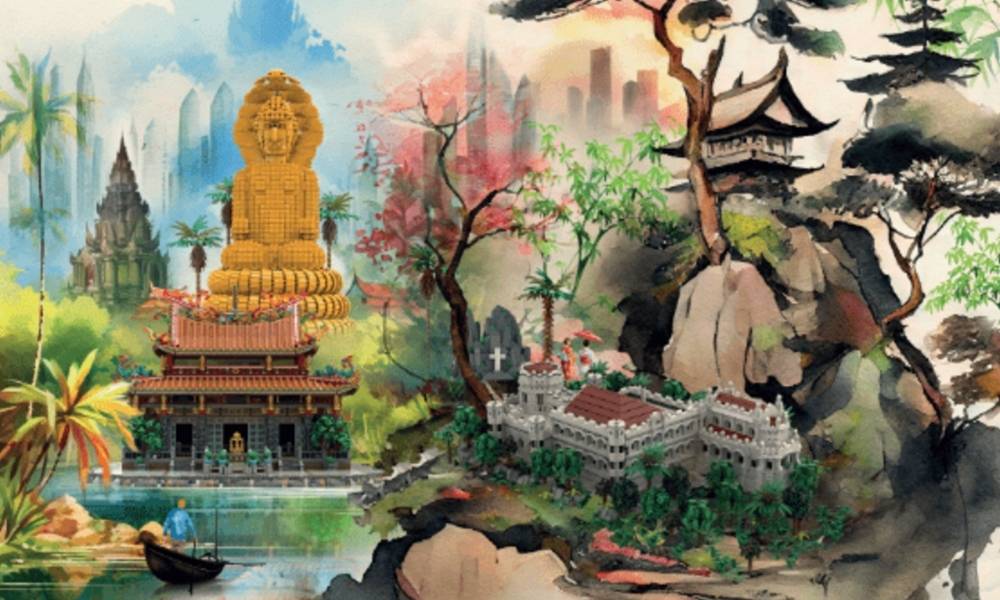Travel across Asia and the Indian Ocean with monumental LEGO brick models!
The exhibition “Destination Asia: A Missionary Journey in LEGO Bricks” offers a multicultural experience, establishing a link between France, Asia and the Indian Ocean. Fourteen monumental models in LEGO bricks transport visitors from Japan to Madagascar, via China, Cambodia and Indonesia. This itinerary covers twelve countries, allowing the discovery of the cultures, religions and peoples of this vast continent.
The exhibition highlights iconic sites such as the Nazareth Printing House in Hong Kong, the Great Mosque of Medan in Indonesia, the Benares Stairs on the Ganges in India, and the Tsarahasina Mission in Madagascar. Through these stages, It highlights the richness and diversity of the historical, cultural, religious and human heritage in the missionary countries of the Paris Foreign Missions (MEP).
Present since 1658, the MEPs play a key role in intercultural, social and interreligious dialogue in Asia and the Indian Ocean. This tour allows visitors to immerse themselves in 360 years of adventures on the roads opened by these missions.
In addition to the exhibition, a varied cultural programme is offered, including guided tours, concerts, workshops and a competition aimed at young audiences, thus enriching the experience.
A unique exhibition in LEGO bricks
The concept is modern, unifying, intergenerational and multicultural. The LEGO brick reaches a wide audience, from 7-year-old children to 77-year-old adults. This exhibition aims to tell the story of human heritage in an innovative way while creating extraordinary constructions. As a contemporary tool for artistic expression, building bricks transcend their status as a simple toy, becoming an innovative communication medium combining play, creativity and education.
In total, 300,000 bricks were needed to make these models, the largest of which measures over 2 meters long. All the pieces from the LEGO repertoire were used to create true works of art, as detailed and realistic as possible. The decorative elements and figurines contextualize the models, thus reconstructing the environments and places represented.
Address : Missions Etrangères de Paris
128, rue du Bac, Paris 7
From Saturday, November 30, 2024 to Saturday July 5, 2025
Tuesday to Saturday 10am to 6pm

